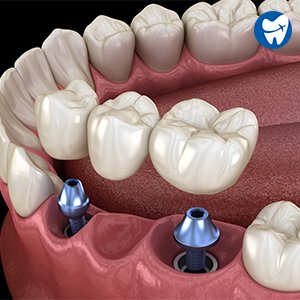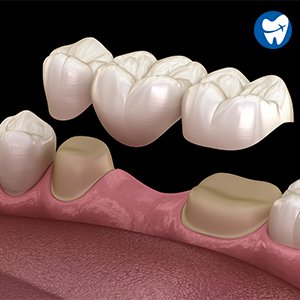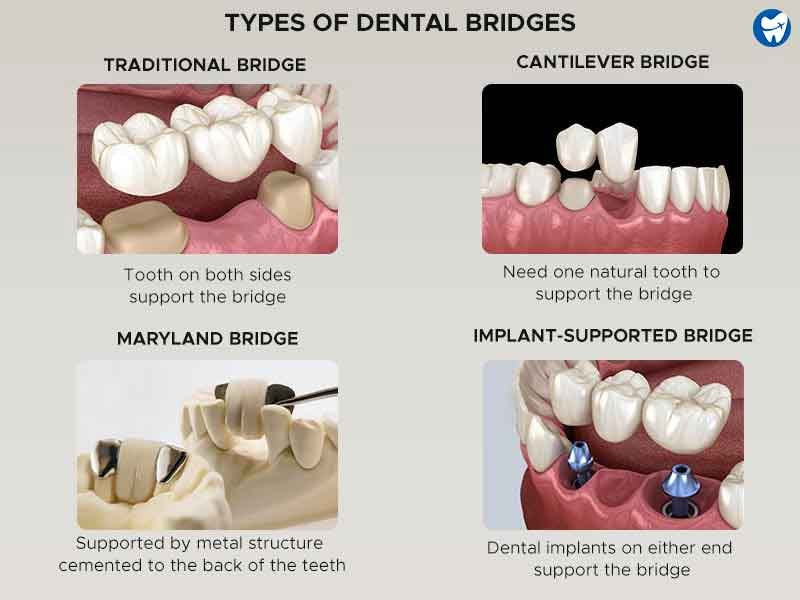Are you in need of dental bridges or crowns but concerned about the cost? Look no further! This article explores the affordable solutions available abroad for dental bridges and crowns. Whether you’re looking to replace a missing tooth or improve the appearance of your smile, you’ll discover how seeking treatment abroad can be a cost-effective option without compromising quality. Say goodbye to pricey dental bills and hello to a healthy and confident smile!
Table of Contents
ToggleWhat are Dental Bridges and Crowns?
Dental bridges and crowns are dental restoration methods commonly used to replace missing teeth or improve the appearance and functionality of damaged teeth. These procedures are often recommended by dentists to restore a patient’s smile and oral health. Understanding the definition and how they work can help you make an informed decision about whether they are the right solution for you.
Definition of Dental Bridges
A dental bridge is a prosthetic device that fills the gap left by one or more missing teeth. It consists of two or more crowns on either side of the gap, called abutment teeth, with one or more false teeth in between, known as pontics. The abutment teeth serve as anchors for the bridge, holding the pontics securely in place. Dental bridges can be supported by natural teeth or dental implants.
Definition of Dental Crowns
Dental crowns, also known as caps, are tooth-shaped coverings that are placed over a tooth to restore its shape, size, strength, and appearance. Crowns are typically used to protect a weak tooth from further damage, restore a broken tooth, cover a dental implant, or improve the aesthetic appearance of a tooth.
How Dental Bridges Work
Dental bridges work by utilizing the adjacent teeth to support the replacement tooth or teeth. The abutment teeth are prepared by removing a portion of their enamel to make space for the crowns that will hold the pontics. The crowns are then placed over the abutment teeth, effectively bridging the gap left by the missing teeth. This procedure restores the functionality of the teeth, allowing you to chew and speak properly without any discomfort.
How Dental Crowns Work
Dental crowns work by completely encasing a damaged tooth, restoring its shape, size, strength, and appearance. The damaged tooth is first prepared by removing any decay or weakened areas. Then, an impression of the prepared tooth is taken to create a custom-made crown. A temporary crown is placed over the tooth while the permanent crown is being fabricated. Once ready, the permanent crown is cemented onto the tooth, providing a durable and natural-looking restoration.
Benefits of Dental Bridges and Crowns
Dental bridges and crowns offer numerous benefits beyond just improving your dental health. Here are some of the key advantages of these restorative procedures:
Restoration of Functionality
One of the main benefits of dental bridges and crowns is the restoration of functionality. By replacing missing teeth or restoring damaged teeth, these procedures enable you to chew and bite properly, improving your ability to eat a wider variety of foods and maintain a balanced diet. They also help in maintaining the alignment of your teeth by preventing neighboring teeth from shifting.
Improved Appearance
Dental bridges and crowns can greatly enhance the appearance of your smile. They are customized to match the shape, color, and size of your natural teeth, resulting in a seamless and natural-looking restoration. Whether it’s a missing tooth or a discolored tooth that you want to conceal, dental bridges and crowns can significantly improve the aesthetic aspect of your teeth.
Protection of Remaining Teeth
When a tooth is lost or damaged, the surrounding teeth can often become susceptible to various dental issues. By filling the gap with a dental bridge or protecting the damaged tooth with a crown, the remaining teeth are safeguarded from potential problems. Bridges and crowns act as a barrier, preventing bacteria from accumulating in hard-to-reach areas and reducing the risk of tooth decay and gum disease.
Prevention of Further Damage
Dental bridges and crowns can help prevent further damage to your teeth. For example, a cracked tooth can be susceptible to further fractures if left untreated. By placing a crown over the damaged tooth, the crown acts as a protective cover, strengthening the tooth and preventing it from breaking further. Similarly, by replacing a missing tooth with a bridge, the adjacent teeth are protected from shifting and potential problems arising from misalignment.
Enhanced Self-Confidence
Lastly, dental bridges and crowns play a significant role in boosting your self-confidence. A missing tooth or a damaged tooth can affect your self-esteem and make you self-conscious about your smile. By restoring your teeth to their natural and functional state, dental bridges and crowns can give you the confidence to smile, speak, and socialize without any hesitation.

Types of Dental Bridges
There are several types of dental bridges available, and the choice depends on various factors such as the location of the missing tooth, the health of the surrounding teeth, and personal preferences. The following are the most commonly used types of dental bridges:
Traditional Dental Bridges
Traditional dental bridges are the most common type and are typically used when there are natural teeth on both sides of the gap. The bridge consists of two crowns for the abutment teeth and a pontic or false tooth in between. These bridges are made from a variety of materials, such as porcelain, metal, or a combination of both.
Cantilever Bridges
Cantilever bridges are used when there is only one natural tooth on either side of the gap. Unlike traditional bridges that use two abutment teeth, a cantilever bridge only requires one abutment tooth to support the pontic. This type of bridge is suitable for areas of the mouth that are subjected to less stress, such as the front teeth.
Maryland Bridges
Maryland bridges, also known as resin-bonded bridges or Maryland-bonded bridges, are a conservative option for replacing missing teeth. Instead of using crowns as abutments, Maryland bridges rely on a framework bonded to the back of adjacent teeth with resin. They are primarily used for replacing missing front teeth.
Implant-Supported Bridges
Implant-supported bridges are a more permanent and stable option for replacing missing teeth. Instead of relying on natural teeth for support, these bridges are anchored to dental implants that are surgically placed in the jawbone. Implant-supported bridges offer superior strength and stability, making them an ideal choice for patients with several missing teeth.
Types of Dental Crowns
Like dental bridges, dental crowns also come in various types, each with its own unique advantages and considerations. The choice of crown depends on factors such as the location of the tooth, aesthetic preferences, and the patient’s overall dental health. Here are some common types of dental crowns:
Porcelain-Fused-to-Metal Crowns
Porcelain-fused-to-metal (PFM) crowns are a popular choice due to their combination of strength and aesthetics. These crowns have a metal base with a layer of porcelain on top, giving them a natural appearance. PFM crowns are durable and can withstand biting forces, making them suitable for molar teeth where chewing forces are greater.
All-Ceramic Crowns
All-ceramic or all-porcelain crowns are renowned for their exceptional aesthetic qualities. These crowns have a translucent appearance that closely resembles natural teeth, making them an excellent choice for front teeth. They are also biocompatible and do not cause allergic reactions, making them suitable for patients with metal allergies.
Gold Crowns
Gold crowns are known for their durability and longevity. They have been used in dentistry for many years and are highly resistant to wear and tear. Gold crowns are ideal for back teeth, where biting forces are greater, and their gold color adds a unique touch to the smile. However, some patients may prefer a more discreet option.
Zirconia Crowns
Zirconia crowns are made from a strong and durable ceramic material known as zirconium oxide. These crowns offer excellent strength, making them suitable for both front and back teeth. They also provide a natural appearance and can be customized to match the color and shape of the surrounding teeth.

Procedure for Dental Bridges
If you are considering getting a dental bridge, it is essential to understand the procedure involved. The process typically involves the following steps:
Initial Consultation
During the initial consultation, your dentist will examine your teeth, assess your oral health, and discuss your goals and preferences. They may take X-rays or 3D scans to evaluate the condition of your teeth and jawbone.
Teeth Preparation
If your natural teeth are being used as abutments, your dentist will prepare them by removing a portion of their enamel. This is necessary to ensure a proper fit for the crowns. Local anesthesia will be administered to ensure your comfort during this process.
Impressions and Temporary Bridge
After teeth preparation, impressions of your teeth will be taken to fabricate a custom bridge. While the permanent bridge is being created in the laboratory, a temporary bridge will be placed to protect your teeth and maintain aesthetics.
Bridge Placement
Once the permanent bridge is ready, your dentist will remove the temporary bridge and check the fit, shape, and color of the new bridge. Any necessary adjustments will be made before permanently cementing the bridge onto the abutment teeth. The dentist will ensure a proper bite alignment and provide instructions for care and maintenance.
Procedure for Dental Crowns
If you need a dental crown, the procedure typically involves the following steps:
Consultation and Examination
Similar to the dental bridge procedure, the process starts with an initial consultation where your dentist will assess your oral health and discuss the treatment options available. X-rays or 3D scans may be taken to evaluate the condition of your tooth and surrounding structures.
Tooth Preparation
Your dentist will prepare the tooth that will receive the crown by removing decay or weakened areas. A portion of the tooth’s enamel will be shaved off to create space for the crown. Local anesthesia will be administered to ensure your comfort during this process.
Impressions and Temporary Crown
After the tooth is prepared, impressions of the tooth will be taken to create a custom-made crown. A temporary crown will be placed over the prepared tooth to protect it while the permanent crown is being fabricated.
Crown Placement
Once the permanent crown is ready, your dentist will remove the temporary crown and check the fit, shape, and color of the new crown. Any necessary adjustments will be made before cementing the crown onto the prepared tooth. The dentist will ensure a proper bite alignment and provide instructions for care and maintenance.

Factors Affecting the Cost of Dental Bridges and Crowns
The cost of dental bridges and crowns can vary depending on several factors. Understanding these factors can help you determine the potential cost and plan accordingly. Here are some common factors that can influence the cost of dental bridges and crowns:
Location
The cost of dental bridges and crowns can vary significantly depending on the location. Different countries and regions have different healthcare systems and fee structures, resulting in cost differences. For example, the cost of dental treatment in developed countries, such as the United States or Canada, can be considerably higher compared to developing countries.
Materials Used
The type of materials used for dental bridges and crowns can significantly affect the cost. Higher-quality materials like porcelain, zirconia, or gold tend to be more expensive than metal or resin-based materials. The choice of material may also depend on factors such as durability, aesthetics, and the patient’s preferences.
Complexity of the Case
The complexity of the dental case can also impact the overall cost. More complex cases that require additional dental procedures or extensive preparation work may incur higher charges. For example, if a patient requires bone grafting or gum surgery prior to the placement of the bridge or crown, the cost will likely be higher compared to a straightforward case.
Additional Procedures Required
In some cases, additional procedures may be necessary to ensure the success of the dental bridge or crown. For example, if a patient requires a dental implant to support a bridge or crown, the cost will be higher due to the additional surgical procedure involved. Each additional procedure adds to the overall cost of the treatment.
Cost Comparison: Abroad vs. Domestic
With the rising cost of dental procedures in many countries, an increasing number of patients are considering getting dental bridges and crowns abroad as a cost-effective alternative. While quality of care, expertise of the dentist, and patient satisfaction should always be top priorities, there can be significant cost savings by getting treatment abroad.
Average Cost of Dental Bridges and Crowns in Different Countries
The cost of dental bridges and crowns can vary widely between countries. For example, in the United States, the average cost of a dental bridge can range from $2,000 to $5,000 per tooth, while a dental crown can cost between $800 to $1,500 per tooth. In comparison, countries like Mexico, Thailand, or Hungary offer significantly lower prices, with average costs ranging from $250 to $1,000 per dental bridge and $150 to $500 per dental crown.
Factors Influencing Cost Differences
The cost differences between countries can be attributed to several factors. Lower labor costs, lower overhead expenses, and different healthcare systems contribute to the lower prices abroad. Additionally, the cost of materials and laboratory fees may also vary between countries, impacting the overall cost of dental treatments.
Examples of Cost Savings by Getting Treatment Abroad
To illustrate the potential cost savings, consider the following examples. A patient in the United States who requires a three-unit dental bridge can expect to pay an average of $6,000 to $15,000. The same treatment in Mexico or Thailand may cost as little as $750 to $3,000. Similarly, a single dental crown in the United States may cost around $1,000 to $1,500, while the cost in Hungary or India could be as low as $150 to $300.
It is important to note that cost savings should not be the sole factor in making a decision about getting dental treatment abroad. Research, careful consideration, and good communication with the chosen dental clinic are essential to ensure quality care and satisfactory results.

Choosing a Dental Clinic Abroad
If you decide to explore dental treatment abroad, it is crucial to choose a reputable dental clinic that meets your needs and provides high-quality care. Here are some key steps to consider when choosing a dental clinic abroad:
Researching Reputable Clinics
Start by researching dental clinics that offer the services you require in the desired location. Look for clinics with positive online reviews, professional websites, and accreditations or certifications from recognized dental organizations. Importantly, verify the clinic’s legitimacy and reliability to avoid potential scams or low-quality treatment.
Checking Dentist Credentials and Experience
Ensure that the dentists at the chosen clinic are qualified, licensed, and experienced in performing dental bridges and crowns. Look for information about their education, training, and specializations. Consider their years of experience and expertise in the field.
Reading Patient Reviews and Testimonials
Patient reviews and testimonials can provide valuable insights into the quality of care and patient experiences at the clinic. Read reviews from multiple sources to get a more comprehensive understanding of the clinic’s reputation and patient satisfaction levels. Pay attention to reviews that specifically mention dental bridges and crowns for a more relevant perspective.
Considering Travel and Accommodation Arrangements
When choosing a dental clinic abroad, it is essential to consider travel and accommodation arrangements. Look for clinics located in regions with convenient transportation options and affordable accommodation. Factor in the cost of travel, visa requirements, and the overall convenience of the location.
By carefully researching and considering these factors, you can select a reputable dental clinic abroad that meets your needs and provides high-quality dental care at an affordable cost.
Conclusion
Dental bridges and crowns are valuable dental restoration options that can restore the functionality, appearance, and confidence of individuals with missing or damaged teeth. Whether it’s a dental bridge that fills a gap or a dental crown that protects a damaged tooth, these procedures offer numerous benefits.
Understanding the types of bridges and crowns available, the procedures involved, and the factors that influence cost can help you make an informed decision. Additionally, exploring the option of getting dental treatment abroad may offer significant cost savings without compromising on the quality of care.
Remember to prioritize factors beyond cost when choosing a dental clinic abroad, such as dentist credentials, patient reviews, and overall convenience. By considering these factors and doing thorough research, you can find a reputable dental clinic that provides affordable and high-quality dental bridges and crowns to restore your smile and oral health.



